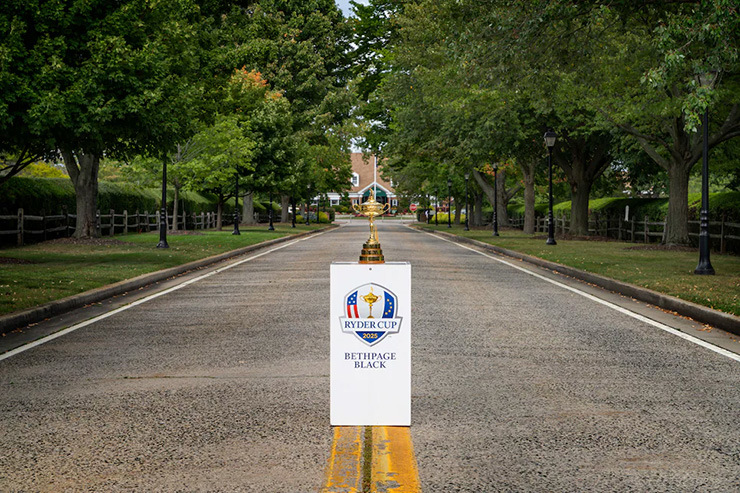The Ryder Cup is a theater of athletic prowess, national pride, and raw emotion. But at Bethpage Black in Farmingdale, New York, that theater often transforms into a gladiatorial arena, where the roar of the crowd becomes as much a part of the contest as the swing of a club. The recent showdown saw this phenomenon reach unprecedented levels, with European stalwarts Rory McIlroy and Shane Lowry bearing the brunt of an exceptionally fervent, and at times, intensely personal American crowd.
Bethpage Black: A Stage Set for Intensity
From the moment Bethpage Black was designated as a Ryder Cup venue, expectations for a boisterous atmosphere were high. Known for its demanding course and passionate New York sports fans, it was never going to be a quiet affair. The Ryder Cup, by its very nature, encourages a more vocal display of nationalism than typical golf tournaments. Individual events often maintain an almost reverential silence, but the Ryder Cup is different—it thrives on collective energy. This distinction, however, often blurs the line between spirited support and outright hostility.

The Escalation of the Roar: Personal Attacks and Player Responses
What unfolded during the afternoon four-ball match featuring McIlroy and Lowry, pitted against the American duo of Justin Thomas and Cameron Young, transcended mere “home-crowd advantage.” Over 18 holes, the European pair were subjected to a barrage of heckling, often specifically timed to disrupt their pre-shot routines. As Europe`s lead grew, so did the intensity of the crowd`s vocalizations, necessitating increased security presence and leading to multiple fan ejections.
“We knew what we were going to get coming here. It was a very tough day,” Lowry reportedly stated, acknowledging the expected intensity but hinting at its severity. “Being out with Rory doesn`t make it any easier. I think he`s getting the brunt of it.”
The heckling wasn`t just generic jeering; it delved into deeply personal territory. McIlroy endured taunts about past major losses, his marriage, and even his 2025 Masters victory being labeled “a fluke.” Lowry faced comments about his physique and perceived contributions to the partnership. This level of personal invective pushes the boundaries of acceptable fan behavior, transforming competitive spirit into something more akin to targeted harassment. McIlroy himself, usually unflappable, responded with a terse “Shut the f— up!” at one point, indicating the extreme pressure.
The Athlete`s Gauntlet: Navigating the Noise
For elite athletes, maintaining focus amidst a cacophony of distractions is a learned skill. Yet, when the distractions become direct, personal attacks, the challenge escalates. McIlroy and Lowry demonstrated a remarkable, if visibly strained, resilience. McIlroy’s defiant celebrations—fist-pumping, gesturing, and exclaiming “Come on! Come the f— on!” after sinking a crucial birdie putt on the 14th hole—were not just reactions to a good shot, but a visceral response to the psychological warfare being waged from the galleries. It was a fascinating display of channeling frustration into competitive fire, a silent (or not so silent) declaration that their resolve would not crumble.
One might even suggest, with a touch of irony, that such persistent “feedback” from the audience serves as an unintended form of high-stakes performance conditioning. If you can perform under *these* conditions, you can perform under any.
Maintaining Order Amidst the Chaos
The PGA of America and local law enforcement were clearly challenged by the crowd`s fervor. The presence of nearly 20 New York State Police troopers lining the ropes by the ninth hole, along with officers monitoring galleries on bikes, underscored the extraordinary measures required. The ejection of fans, including one specifically pointed out by Lowry for heckling McIlroy, highlighted the difficult task of enforcing decorum without stifling the passionate atmosphere that the Ryder Cup thrives on. It`s a delicate balancing act: preserving the event`s unique energy while ensuring player safety and respect for the game.
U.S. captain Keegan Bradley, while acknowledging the “passionate” nature of the American crowd, subtly noted that “you`re always going to have a few people that cross the line, and that`s unfortunate.” He also offered a pragmatic observation, suggesting that the U.S. team`s underperformance might have contributed to the crowd`s “angry” disposition. An interesting hypothesis: is crowd vitriol inversely proportional to home team success?
Beyond the Green: A Reflection on Sportsmanship and Spectacle
The Bethpage Black Ryder Cup will be remembered not just for its golf, but for its unique crowd dynamic. It serves as a potent reminder of the thin, often permeable, line between passionate support and unsportsmanlike conduct. While the Ryder Cup`s intense atmosphere is part of its allure, the question remains: at what point does it become detrimental to the players and the integrity of the sport?
Ultimately, events like these force a communal introspection on the nature of fandom. Is the objective to intimidate and demoralize the opposition at all costs, or to passionately support one`s own, respecting the game and its participants? For McIlroy and Lowry, it was an experience described as “intense” and “unique”—a testament to the enduring, raw human element that makes the Ryder Cup one of sport`s most compelling spectacles, even when it veers into controversy.

